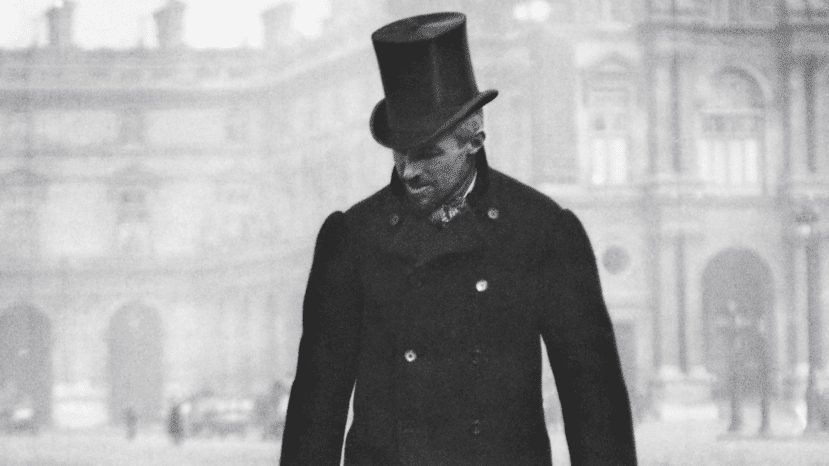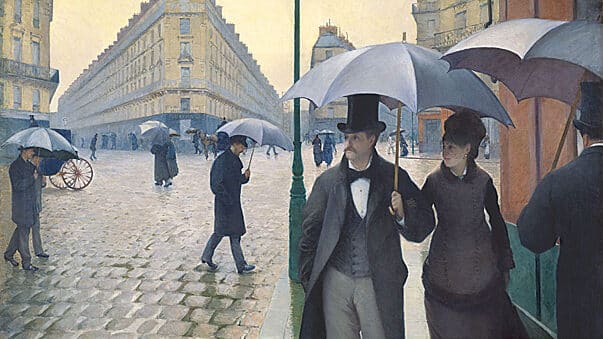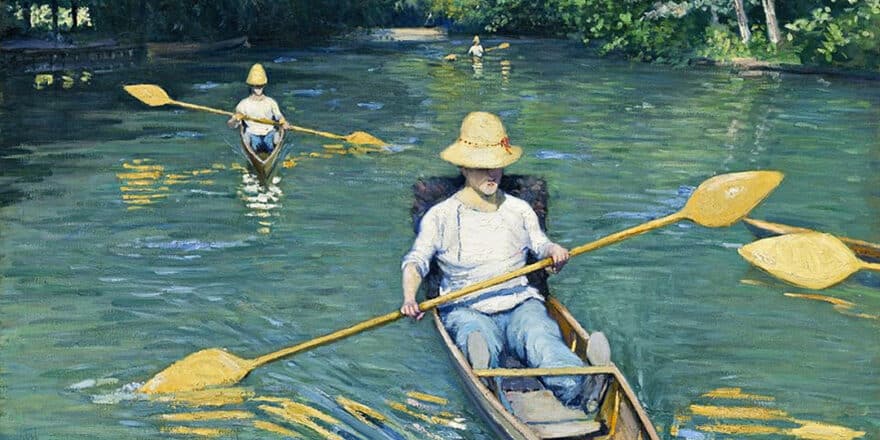Gustave Caillebotte at the Musée d’Orsay from October 8, 2024

To honor the 130th anniversary of Gustave Caillebotte’s death, the Musée d’Orsay is organizing a groundbreaking exhibition, “Caillebotte, Peindre les hommes”, from October 8, 2024. An opportunity to rediscover this Impressionist artist through a unique prism: the representation of male figures in his work.
Gustave Caillebotte, one of the most fascinating painters of the Impressionist movement, will be in the spotlight at the Musée d’Orsay this autumn. This exceptional exhibition, entitled “Caillebotte, Peindre les hommes” (“Caillebotte, Painting Men”), will run from October 8 and mark the 130th anniversary of the artist’s death. Through a selection of carefully chosen works, the exhibition will shed light on the way Caillebotte depicted male figures in his paintings, offering a fresh perspective on one of the most singular aspects of his work.
Exploring masculinity in Caillebotte’s work

Although Gustave Caillebotte is often celebrated for his Parisian urban scenes, landscapes and still lifes, he is no less a painter of the human figure. Unlike some of his Impressionist contemporaries, who favored women and bucolic scenes, Caillebotte was particularly interested in men, whom he painted in their everyday surroundings.
The exhibition “Caillebotte, Peindre les hommes” (Caillebotte, Painting Men) focuses precisely on this aspect, revealing canvases in which men are at the center of the composition. The representation of masculinity, in often ordinary moments of life, proves to be a recurring theme in his work. Workers, craftsmen, businessmen and strollers populate his paintings, offering a realistic and sometimes intimate vision of late 19th-century Paris. Works such as “Les Raboteurs de parquet” and “Le Pont de l’Europe” illustrate this view of a changing male society.
Caillebotte and Impressionism: a unique painter
Born in 1848, Gustave Caillebotte may be less well known than his contemporaries Monet, Renoir or Degas, but he played a key role in the development of Impressionism. As well as being a talented artist, he was also a great patron and collector, having financially supported many Impressionist artists.

What particularly sets Caillebotte apart is his attention to detail and his ability to capture everyday life with almost photographic precision, while retaining the Impressionist spirit in his technique. Through his canvases, he managed to capture the atmosphere of Parisian life, particularly that of men, often in a modern, industrial or urban environment.
Practical information for the exhibition
This exhibition is a unique opportunity to plunge into the world of Gustave Caillebotte, a painter who deserves to be rediscovered from a new angle. Here’s some practical information to help you plan your visit:
- Opening date: October 8, 2024
- Exhibition ends: February 25, 2025
- Location: Musée d’Orsay, 1 Rue de la Légion d’Honneur, 75007 Paris
- Access: Metro line 12 – Solférino station, RER C – Musée d’Orsay station
- Opening hours: Open every day except Monday, from 9:30 am to 6:00 pm, nocturne on Thursday until 9:45 pm.
- Admission: Full price €16, concessions €13, free for under-18s and young Europeans under 26.
An ideal outing for art lovers… and their loved ones
This exhibition is an excellent opportunity for art lovers to rediscover Caillebotte ‘s work from a new angle, but also for the curious who wish to learn more about Impressionism and the representation of men in 19th-century art. A perfect cultural outing for the whole family, especially parents, to learn more about this multi-talented Impressionist painter.
Don’t miss this unprecedented retrospective, which pays tribute to one of the greatest artists of Impressionism and promises to make you rediscover Gustave Caillebotte through a new prism, that of male figures.




